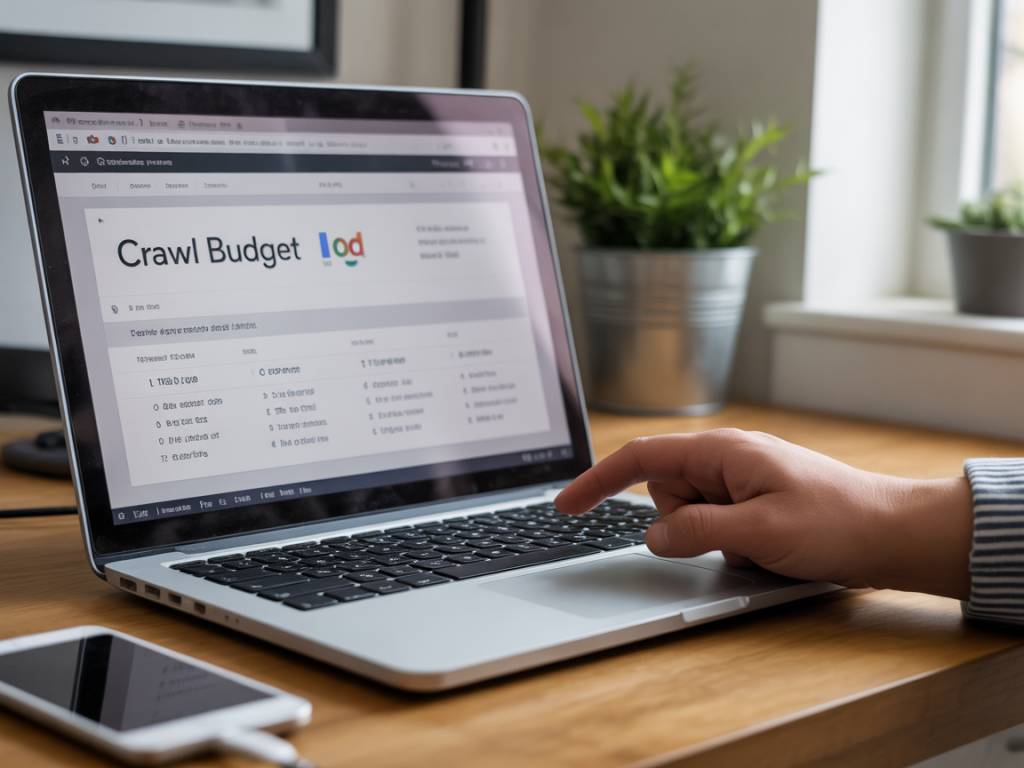What is the crawl budget and how to optimize it for better indexing

What is the crawl budget and how to optimize it for better indexing
Understanding Crawl Budget: What It Is and Why It Matters
If you’re investing time and resources into SEO, there’s one resource you might be ignoring—your crawl budget. Search engines like Google don’t crawl every page of your site equally. Understanding how crawl budget works and how to optimize it can make the difference between pages being indexed quickly and not being indexed at all.
So, what exactly is a crawl budget? In simple terms, it’s the number of pages Googlebot (or any search engine crawler) is willing and able to crawl on your site within a given timeframe. If you run a small site, crawl budget might not be a big issue. But for medium and large-scale websites, e-commerce stores, or platforms with thousands of pages? It matters. A lot.
How Crawl Budget Is Calculated
Crawl budget is influenced by two main factors:
- Crawl Rate Limit: The maximum number of simultaneous connections a crawler can make to your site without degrading server performance.
- Crawl Demand: Based on how often your content changes and how popular (or important) it is in Google’s eyes.
Let’s say your server can handle only 100 requests per minute; Googlebot won’t exceed that unless it sees a compelling reason. Similarly, if a page hasn’t been updated in years and doesn’t get traffic, it might be skipped altogether. That’s crawl budget at work.
Why You Should Care About Crawl Budget
Imagine spending hours crafting brilliant product pages or digging deep to create long-form content, only to discover Google hasn’t indexed it a week later. That’s what happens when crawl budget is mismanaged. Pages that don’t get crawled won’t get indexed. And if they’re not indexed, they won’t rank—no matter how well-optimized they are.
Here’s a quick example from one of my past clients: a SaaS platform with 50,000 URLs. Google was only crawling around 2000 pages per day, largely because of duplicate content and crawl traps. After cleaning up their architecture and implementing URL management practices (which we’ll cover soon), we boosted crawl efficiency by over 40%. That translated into faster indexing and improved rankings within weeks.
Signs Your Crawl Budget Is Being Wasted
- Google Search Console shows a high number of discovered URLs but low indexing rates.
- Site gets regular updates, but new content takes days (or weeks) to appear in search results.
- Log file analysis shows Googlebot frequently hitting non-valuable or duplicate pages.
If these look familiar, it’s time to put crawl budget optimization on your SEO roadmap.
How to Optimize Crawl Budget (Step-by-Step)
Optimize Site Architecture
Keep it shallow. Ideally, every page should be accessible within three clicks from the homepage. Deep, nested structures make it harder for crawlers to find and prioritize content. Use internal linking wisely to highlight high-priority pages.
Actionable Tip: Build topic clusters with strong pillar pages and interlink them. It not only helps users but also guides Googlebot efficiently.
Eliminate Duplicate Content
Duplicate content splits crawl budget across multiple URLs that offer no unique value. Canonical tags, 301 redirects, and proper parameter handling in Google Search Console can help fix this.
I’ve seen e-commerce sites with thousands of product variations (by size, color, etc.) waste crawl budget on near-identical URLs. Tag your canonical versions and use rel=”nofollow” or disallow directives on non-essential variants.
Use Robots.txt and Noindex Strategically
Don’t let crawlers wander aimlessly. Use your robots.txt to block access to non-critical directories. At the same time, remember that noindex doesn’t block crawling by itself—it just prevents indexing. Combine both smartly.
- Block filter pages, admin panels, and cart functionality.
- Noindex thin content pages such as internal search results or print-only versions.
Quick Example: Block URLs like /search?query= from your robots.txt and set noindex on paginated archive pages beyond the first if they don’t bring unique traffic.
Fix Crawl Errors
Monitor Google Search Console for crawl errors—404s, soft 404s, server errors. Broken pages waste crawl cycles and confuse crawlers. Redirect broken URLs where relevant or remove them cleanly from your sitemap.
Also, crawl your site with tools like Screaming Frog or Sitebulb to identify orphan pages and crawl loops.
Don’t Overload the XML Sitemap
Sitemaps should reflect only the pages you want to index. Including broken or noindex pages? That’s like inviting Google to a party you canceled.
Keep sitemaps clean, under 50,000 URLs per file, and submit them via Google Search Console. Update them dynamically if content changes frequently.
Improve Site Speed & Server Response Time
The faster your site loads, the more pages Googlebot can crawl in one session. A slow server reduces your crawl rate limit. Optimize for Core Web Vitals, compress heavy images, leverage caching, and consider upgrading hosting if necessary.
Bonus tip: Serve static pages or cache heavy pages when possible. Every second shaved off server response time contributes to crawl efficiency.
Minimize Redirect Chains
Too many redirects in a row? Googlebot might not follow them to the end, which means your final page may never be crawled. Keep redirects short, preferably one hop, and audit your redirect map periodically.
Example: Changing category structure? Don’t redirect old URLs across three different paths. Cut the fat and go direct.
Advanced Tactic: Log File Analysis
Want the clearest view of how Googlebot crawls your site? Analyze your server’s log files. You’ll see which URLs get visited, how often, on what days, and with what response codes.
This isn’t a beginner move, but if you’re dealing with massive sites, it’s gold. You might discover crawl traps—like calendar pages that generate millions of unique URLs—or abandoned pages still being crawled despite driving no value.
Tools like Screaming Frog Log File Analyser and Botify can automate the heavy lifting here.
When to Prioritize Crawl Budget Optimization
Not every site needs to obsess over crawl budget. If you’re running a blog with 150 well-structured pages, you’re probably fine. But if your site ticks any of these boxes, crawl budget should be on your radar:
- Over 10,000 unique URLs
- Daily or weekly content updates
- Heavy use of faceted navigation or parameterized URLs
- Past issues with indexing or delayed visibility of new content
It’s about ROI. Fixing crawl budget inefficiencies doesn’t just help bots—it translates into faster indexing, better content prioritization, and ultimately better rankings.
Final Thoughts
Crawl budget isn’t some mysterious black box. It’s a resource—measurable, manageable, and absolutely impactful—especially at scale. By being strategic with how search engine bots navigate your site, you’re not just helping Google work more efficiently—you’re directly influencing your SEO performance.
Audit. Streamline. Optimize. Then monitor results through indexed pages, crawl stats, and site performance metrics. Still unsure where to start? Dive into your log files and sitemap. As with all things SEO: measure first, act second.








